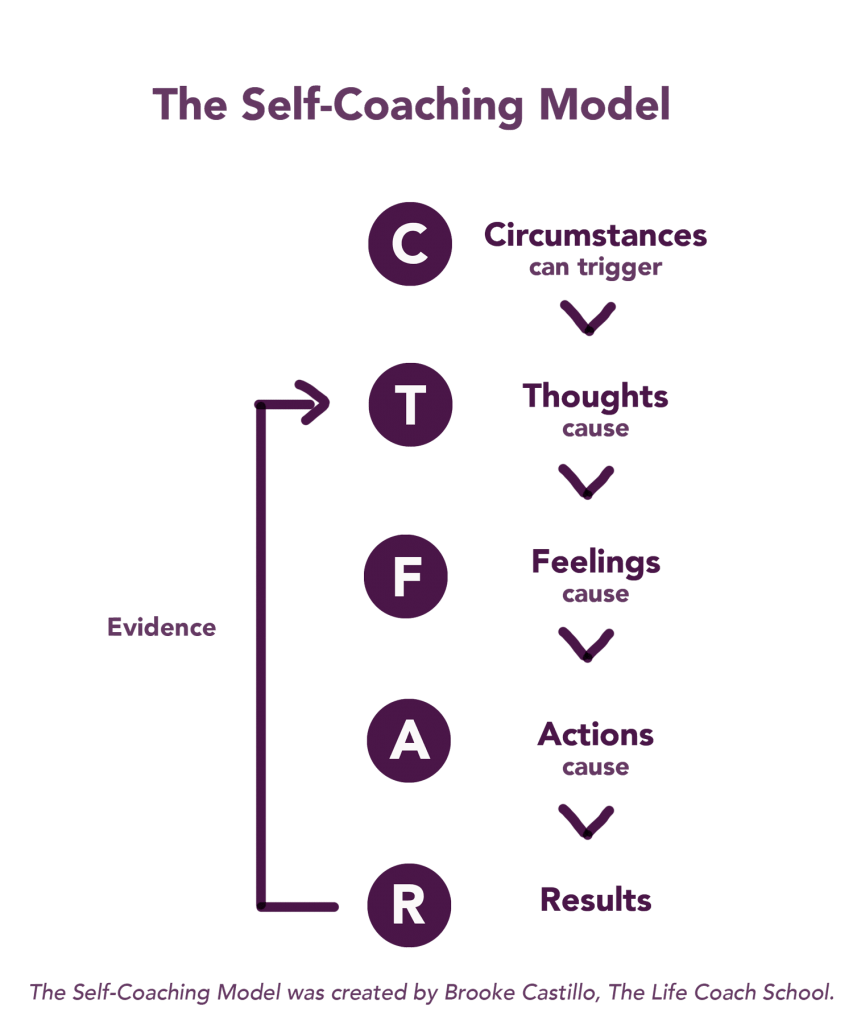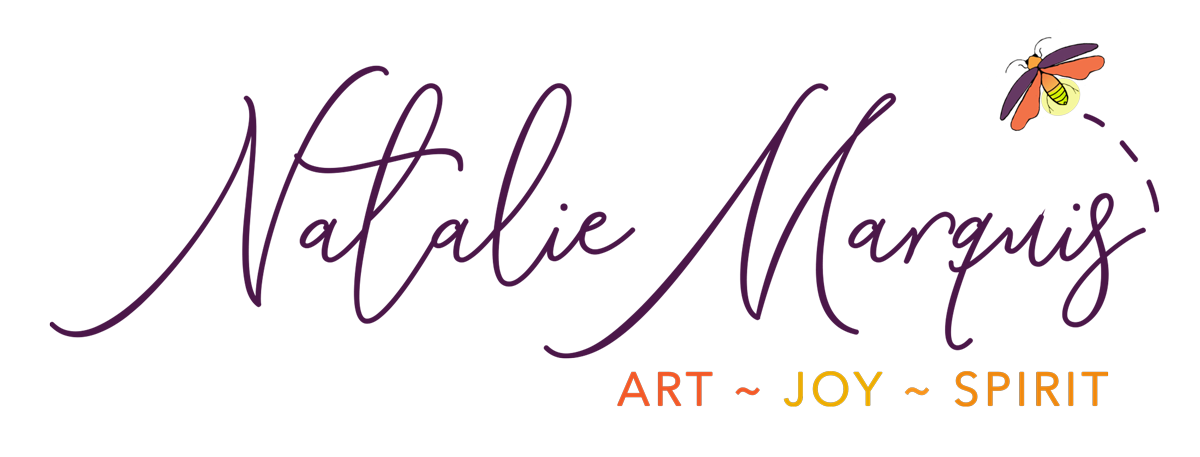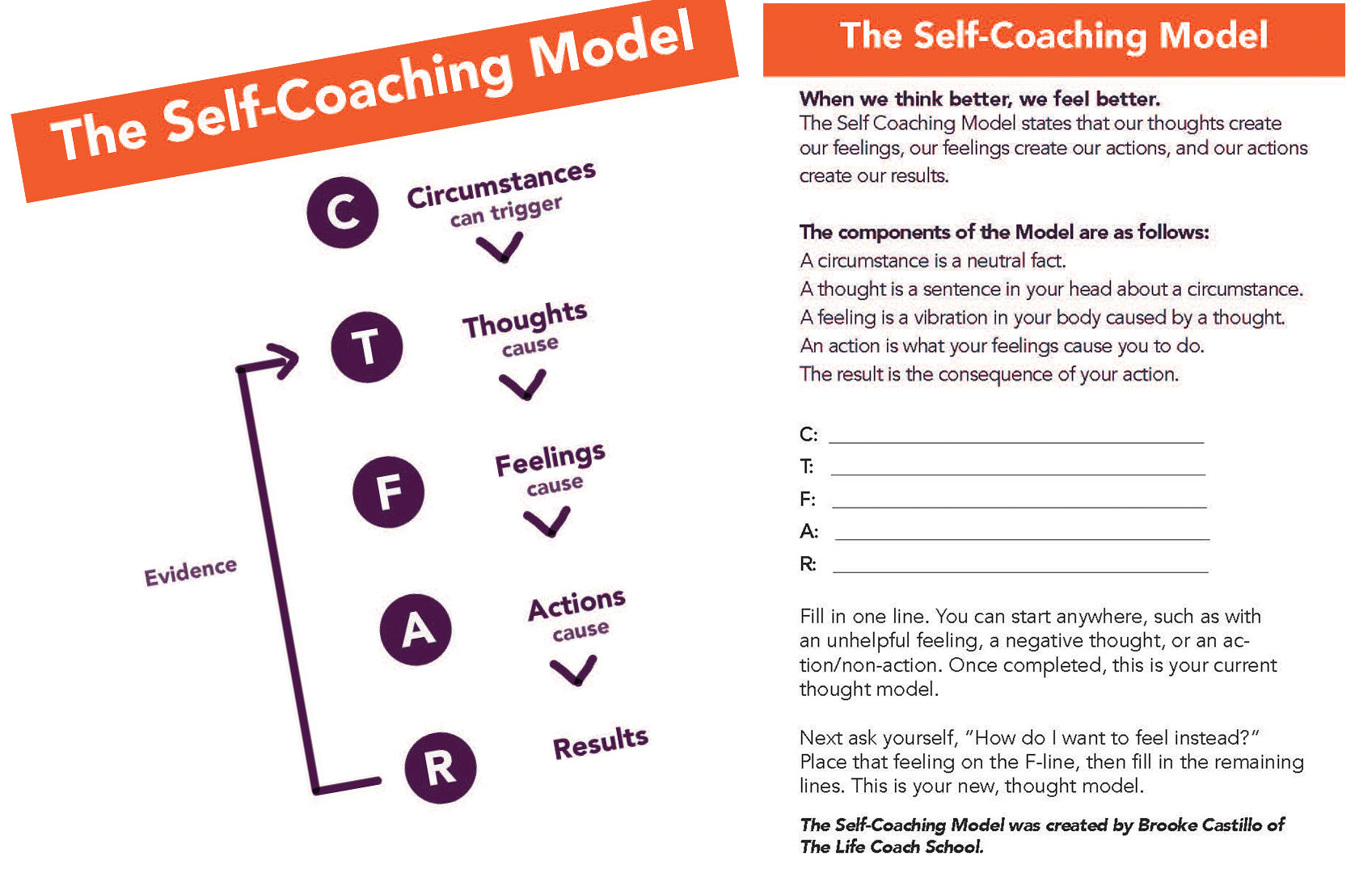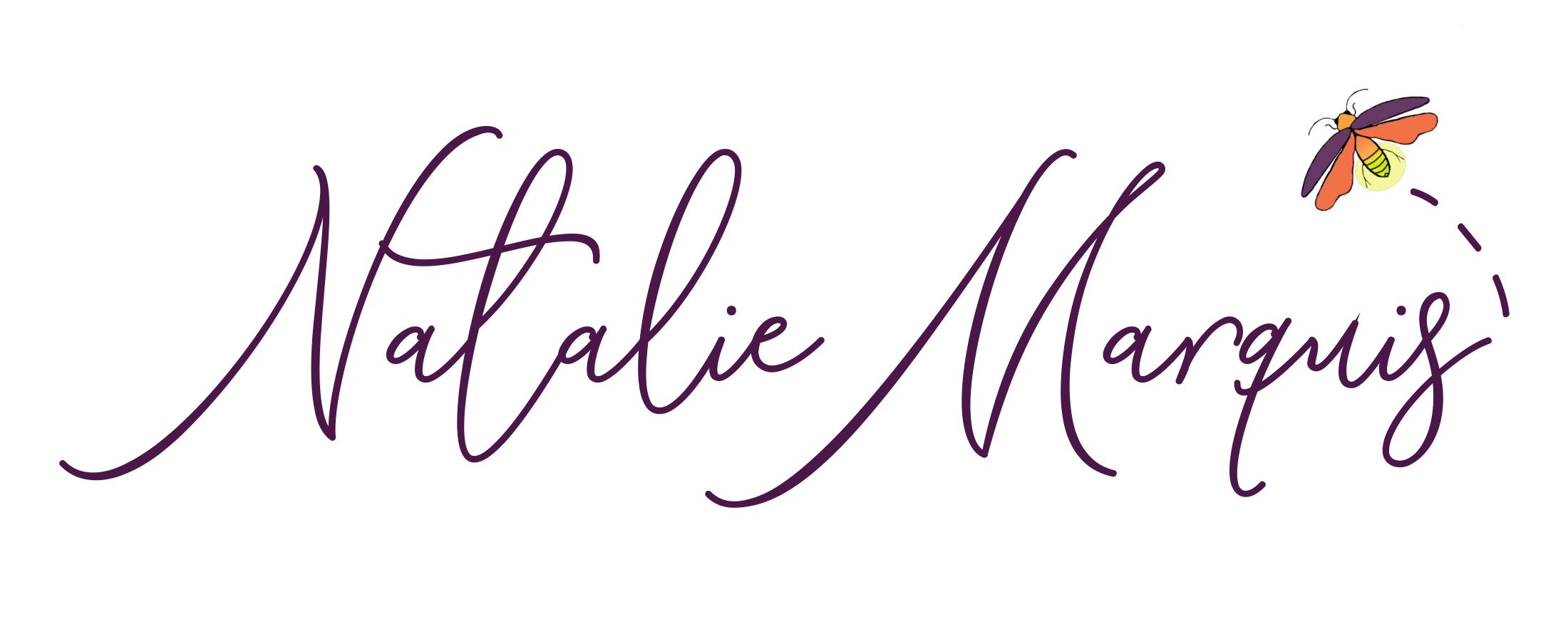The Mind and The Model

An Introduction to Managing Your Mindset with The Model
From a very young age, I had this sense that the mind is the key to success in life, that it was a powerful force that could fuel our success or hold us back. In fact, I have this big blue scrapbook from when I was a teenager. It contains a collection of images, poems, greeting cards, and quotes that I found inspirational. And it contains this quote from mystic Bhagwan Shree Rajneesh, who later became known as Osho, that reads:
“The Mind: Mind can be either the source of bondage or the source of freedom. Mind becomes the gate to this world, the entry, but it can also become the exit. Mind leads you to hell, but mind can also lead you to heaven. So it depends upon how the mind is used. Right use of mind becomes meditation; wrong use of mind becomes madness. Mind is there in everyone. The possibility of both darkness and light are implied in it. Mind itself is neither the enemy nor the friend. You can make it a friend or you can make an enemy. It depends on you – on you who is hidden behind the mind.”
I find it interesting that I was drawn to this quote at such a young age. It’s as if some part of me, my soul mostly likely, knew I was going to have struggles and would have to learn how to harness my mind. My guess is that I saved and pasted this quote in my scrapbook when I was in my late teens. It wasn’t until many years later that I got to experience the truth of this quote in a very real way, when I was twenty-five and started having anxiety and panic attacks after the birth of my son. I was told I had a chemical imbalance that was most likely caused by pregnancy and giving birth. Some women get the “baby blues” and depression, while I was the one percent that got anxiety attacks. And, it didn’t get better as time went on. I continued to struggle with anxiety, panic attacks and obsessive thinking for about eight years. Counseling helped and medication sometimes helped but it was Jon Kabat Zinn’s 8-week Mindfulness Based Stress Reduction course that completely set me free. It freed me from panic attacks and eventually gave my body the peace it needed to resolve and heal the chemical imbalance.
The Power of Meditation
In that program, I learned how to meditate for 45-minutes every day for eight weeks. When I first signed up for the course, I remember thinking, “This is nuts! It’s impossible to quiet my mind. There’s no way in heck I’m ever going to be able to do this.” I was so anxious at that time I could barely sit still. My anxious thoughts were constantly ping ponging all over the place. Some of the thoughts I had were worries about work, caring for my newborn son, and family, while others were just wildly irrational thoughts that frankly scared the crap out of me. It felt like my thoughts were driving me crazy. When Osho writes “the mind leads you to hell” – I get it. I’ve been to that hell. But I also discovered through that 8-week Mindfulness Based Stress Reduction course that I could learn to focus my mind and let my busy thoughts come and go. I learned to witness my thoughts in a detached sort of way and in doing so over and over again, I discovered that I am not my thoughts but rather I am the one observing my thoughts. It completely set me free. As Osho said, “Mind itself is neither the enemy nor the friend. You can make it a friend or you can make an enemy. It depends on you – on you who is hidden behind the mind.” I am the consciousness witnessing the thoughts my mind produces.
The Enemy is an Undisciplined Mind
There is power in realizing that I am the consciousness beyond my thoughts. The mind can be our enemy when it’s undisciplined and we allow it to think whatever it wants to think. This is because the biology of our human brain is built with a negative bias. It’s built to find problems. It’s built to be on the look out for a tiger in the woods, so we’re prepared to run and to keep us safe. Most of us, blessedly, no longer live in a world where we have to be on constant look out to be safe. The Cleveland Clinic says we have around 60,000 thoughts per day and 80% of what we think is negative. Worse, a whopping 95% are repetitive thoughts. So we’re repeatedly thinking a lot of negative junk! It’s no wonder we have trouble feeling good and keeping our spirits up.
The negative bias becomes an even bigger issue when we become chronically stressed either because of illness, overwork or just because we’re overwhelmed; our nervous system is taxed, and frazzled nervous systems go on hyper alert and search for even more problems. As a result we have even more negative thoughts and negative thinking. If this goes on long enough it can alter our brain chemistry, which makes it even harder to focus on the positives or the future. If you’re in this place of experiencing generalized anxiety, or even anxiety attacks, please know that it’s not your fault. Your system has become stressed and a stressed system tends to think more anxious thoughts.
The silver lining in all of this is what OSHO said, the mind can be a friend but it depends on you. If you want a mind that’s friendly, you need to teach it how to be a friend. And if you want the mind be a good friend, you have to get it know it first. The most powerful technique I’ve found for getting to know my mind, how it works and what it thinks, is mindfulness meditation. Through mindfulness meditation we learn an exquisite level of self-awareness, we learn to become aware of our inner mindscape, and how to be mindfully fully present with whatever is unfolding or whatever is present. We can then use this awareness and presence to understand our thinking patterns and choose new thoughts and thinking patterns. Rather than allowing our brains to tell us what to think we can start telling our brains what to think.
Knowing that the mind needs to be managed I, like most everyone else who’s into personal growth, used affirmations, visualization, guided meditation, and inspired action, all in an effort to create a more productive and helpful mindset. Despite this, something seemed to be missing.
What was missing was a formula with a specific set of steps for changing thought patterns. And, we do need a system because as a consulting hypnotist and someone who studies the mind, I can tell you that changing old programming and negative thought patterns can be a real challenge. This is because the brain likes to be super efficient. So if we think something often enough it becomes a habit. And once something becomes a habit, the thoughts that formed that habit go unconscious and are stored in our subconscious. This is why we can tie our shoes without thinking about each little step that’s required. We’ve done it so many times, it’s now a habit and all the little details that formed that habit are executed without consciousness effort. The work I do as a consulting hypnotist can help support and accelerate the process of thought and habit change, but working on our mindset is something all of us can also do on our own as well.
Introducing a Life Changing Tool – The Self-Coaching Model
The concept that I found super helpful and truly life changing is called The Self-Coaching Model. The Model is the brainchild of Brooke Castillo of The Life Coach School. I’ll share links to her podcast and book. I think this woman is truly brilliant. She’s got a knack for simplicity and boiling things down into easy to understand concepts. As Brooke says in her podcast, the ideas are not original but the way she’s packaged them into a formula, if you will, is. The Model is her own understanding of how the mind works and how we create our reality. I know this may not sound particularly groundbreaking but bear with me. I’ll give you several reasons why I feel it is truly innovative in today’s episode.
Another reason I’m super excited to have discovered The Self Coaching Model is because it’s given me a framework and a basic system that I’ve been able to work with and expound upon, combining some of my own emotional healing and energy healing processes, to create a process that works, that is truly doable and effective in helping me shift patterns of negative thinking and limiting beliefs. It’s something I’ve found hugely beneficial for myself personally, and as I introduce it to my clients they are finding it helpful as well.
 So let me introduce you to The Self-Coaching Model. The Model is a framework that explains how the mind works and how we create our reality. It’s made up of 5 words, which occur in a sequential order: Circumstances, Thoughts, Feelings, Actions and Results.
So let me introduce you to The Self-Coaching Model. The Model is a framework that explains how the mind works and how we create our reality. It’s made up of 5 words, which occur in a sequential order: Circumstances, Thoughts, Feelings, Actions and Results.
The sequence is that circumstances can trigger us to have thoughts or judgments about the circumstance, our thoughts in turn cause feelings or emotion, our feelings cause us to take action (or not to act) and our actions or behavior create results in our lives.
In Brooke’s own words she says, (quote) “When you think a thought – you feel a feeling. When you feel a feeling – you take action or not because of how you feel. Your actions (behaviors) create your experience in the world and ultimately what your life looks like –your results. If your thoughts suck, your life is going to suck.” (end quote).
Our current life experience is an indication and a result of the thoughts we think on a regular basis. In debt? Unhappy? Frustrated? Stressed? Drink too much? Overeat? Spend too much? All of these experiences are a result of what you consistently think and feel on a regular basis.
Repetitive-Thoughts Become Unconscious Habits
The tricky part about all this is pinpointing the thought-patterns that are creating these results. Our brains love efficiency so once it’s habituated to a particular thinking pattern, our awareness of it goes unconscious. This is similar to driving to a friend’s home and being in your head so much that when you arrive, you can’t recall how you got there. You drove there on autopilot, which allowed your brain to think about other things on the way. I like working with The Self Coaching Model because I can use it to pinpoint the thinking patterns that have gone unconscious.
The Model is founded on the principal that the circumstances in our lives are neutral. Circumstances are things that happen in the world that we cannot control. Examples of circumstances are: the weather, your coworker’s opinion of you, your spouse not taking out the trash, your friend not texting you back, or your kid acting out at school, etc. We get worked up or upset about these things because of how we think about them. Because of the stories we tell ourselves about them. Although it may seem otherwise, the problem is not the circumstance. The problem is how we think about the circumstance. An example of this would be when you’re friend doesn’t text you back. The circumstance is a friend didn’t text you back. The stories your mind creates might be, “She’s probably mad at me because I didn’t meet her at the gym this morning.” “I was really tired from being up all night with the baby! She has no right to be mad at me for that.” “I should be mad at her for not understanding.” “It’s really rude not to text me back.” Later you learn, your friend accidentally dropped her phone in the toilet and couldn’t text you back because she had to a get a new phone. All the mental angst was created by the thoughts in your mind, not by the circumstance itself.
Eckhart Tolle says “The primary cause of unhappiness is never the situation but the thought about it. Be aware of the thoughts you are thinking. Separate them from the situation, which is always neutral. It as it is.”
When We Think Better, We Feel Better
This means we can look at our life at any point in time and know that our thoughts are creating the results we are currently experiencing. If we’re stressed out, over weight, depressed, overwhelmed, or stuck. It’s because of our thought patterns. If we feel unmotivated, unappreciated, or bored and restless. It’s because of the thoughts we are thinking. On some level most of us know this. What I find helpful about The Self Coaching and its framework, is that it’s given me a way to track down negative thoughts and thinking patterns, which enable me to choose thoughts that feel better. When I think better, I feel better.
I like to think of the Model as a highway with each aspect being a milepost that is leading me to a particular result or destination. At any point, I can pull over and explore a particular milepost to be sure it will take me to where I really want to go. If I notice that I’m feeling angry, stressed, anxious or sad. I can pause and explore the feeling milepost. Since emotions come from thoughts, I can ask myself, “What is the thought that created this feeling?” As you can see this helps me find the negative thought that created the negative feeling.
Or perhaps I notice a snag at the action stage. If I find I’m not taking action towards a goal or a passion, I can ask myself, “What am I feeling that is keeping me from taking action?” Once I find the feeling, I can sit with the feeling for a bit, and then trace the feeling back to the thought that created the feeling. This helps me uncover and pinpoint the thought or thoughts that are causing me not to take action.
Or I can also look at the last milepost, results, and see what I’m currently experiencing in my life. If I’m spending too much time social media, not talking with my partner, or pulled in too many directions, I can stop at this milepost and ask myself questions that will help me understand the actions, feeling and thoughts that are creating these results.
As you can see the framework of The Model allows us to pinpoint the negative thought or thought pattern from any point in the process – from the feeling stage to the action stage and to the results stage. This is because everything flows from our thoughts – I can’t repeat this enough. Thoughts cause feelings, which cause action or inaction, which cause results or our current life experience. It’s a simple,and beautiful, equation.
Just because it’s simple, though, doesn’t mean it’s a quick fix scheme. It does require self-awareness, being brutally honest with yourself, and dedication to reprogramming new thoughts. The upside is that it totally puts you back in the driver’s seat of your own brain and emotion.
The Model Also Helps with Habit Change
The other reason I love working with The Self Coaching Model is because it’s made the process of changing habits easier as well. I’ll give you a personal example of this. For the last seven years I’ve kept my weight within a 10-pound range. Whenever I reach the higher end of this range, I tighten up my diet. In the past, I would force myself to lose weight from the action stage, which means I pick a date and start the new diet plan. With this approach though it would often take me several starts and stops to stick with the diet. I’d pick a date, follow the diet for a few days, and then cave in to temptation. What I realize now, in working with the Model, is that this happened because I hadn’t taken the time to get my brain on board first. Whenever I’d start my new diet, I’d have thoughts in my head that were totally not on board with the diet. I was thinking stuff like “This sucks. Why can’t I eat want I want like my skinny friends? I hate this. I wish it all just came naturally. Why does it have to be so hard.” It’s no wonder, with thoughts like these, that I’d give into my urge to eat sweets and snack at night when I wasn’t physically hungry. Eventually though, I’d get so fed up with myself that I’d force myself to stick with my plan long enough to lose the 10lbs. I did it, but it was a battle. Now I understand it was a battle because I was working up stream against my thoughts and feelings.
This time around, armed with the knowledge of The Model and how my brain works, the process has been much different. I won’t say it’s so easy that I never have to think it about, but now I no longer feel like I’m battling against myself. This time around, weeks before I planned to start my new eating plan, I started writing down how I wanted to feel and think. For me, I recognized that eating foods with sugar and flour is a slippery slope. I’d lose the 10lbs and then little by little I’d gain the weight back because I’d allow a little sweet thing here, then a little more bread there, and within a few months I’m eating a pastry snack or something sweet every night after dinner, whether I was physically hungry or not. This time around I decided I was going to eliminate sugar and flour. As far as changing my thoughts, I decided I no longer want to LIKE eating foods with flour and sugar. I also decided that I wanted to eat only when my body needed fuel. So these were the thoughts I started working with. I’m excited to say that this time around, following my plan has been so much easier. It’s also been a bit surprising. Not only did I decide to implement a plan, but I made a commitment to myself to follow the plan for not just 30 days, which was my typical MO, but to commit to the plan for a year. Some how, I decided that I wanted to give my body a long-term break, in hopes that it will reset itself and no longer be so sensitive to sugar. A year commitment. I have to say that’s not something I would have done if I hadn’t started working with my thoughts and getting my thought patterns on board first.
As I record this podcast I’ve been following my program for a month and ten days. Last month I simply followed my plan, which is I can eat anything I want as long as it doesn’t have added sugar or flour in it. I put a smiley face sticker on my calendar for everyday I followed my plan. I followed it for 30 out of 31 days in December. Then in January, I decided I’d now start to eliminate nighttime eating as well. This wasn’t a hugely premeditated decision, but all along I’ve being doing my thought work, which is why I believe this new decision and behavior happened so organically. In January, I added a second sticker to my calendar for every day I didn’t eat after dinner. I’ve followed this regime, 8 out of 10 days.
The point isn’t how perfectly I’m honoring my decisions, the point is how much easier it’s been to follow my plan. I don’t feel deprived. It doesn’t feel hard. I do have to be diligent about sticking to my plan but I’m no longer working against my thoughts and feelings. Instead I’m working with the new thoughts and feelings that I chose. And the more I take action on them, the more they are becoming my new way of being the world. OSHO said, “Mind can be either the source of bondage or the source of freedom.” For me it’s bondage when I was allowing my brain to whine and complain about how hard eating healthy was. Freedom is when I took my power back, with some help from the Self-Coaching Model, and started telling my brain what to think.
Questions to Ponder
- Where are you stuck or not moving forward in your life right now?
- When you contemplate taking a specific action on your dream, how do you feel? Do you feel energized, determined, or hopeful? Or do you feel confused, stuck or defeated? If it’s the later, notice what you’re thinking and consider using the Self-Coaching Model and the thought ladder technique from Episode 4 to start shifting the unhelpful thoughts and feelings.
- How do you really want to feel instead?
- And, what would you need to think to feel that way?
The Self-Coaching Model is remarkable tool that will help you think better so you can feel better. Download the mini-worksheet.



